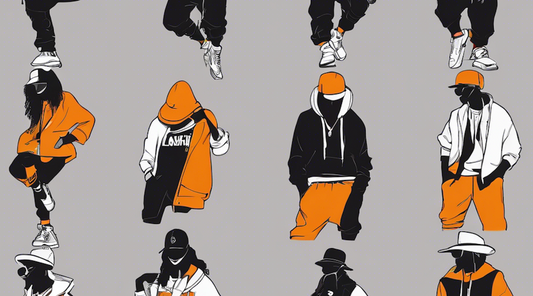Hello, my name is Kamijo from Omnis.
Recently, the first-ever AI Fashion Week, which utilized generative AI, was held in New York (details here).
In this blog, I would like to share my experiences as an AI fashion designer participating in AI Fashion Week.
Motivation for Participating in AI Fashion Week
The reason I decided to participate in AI Fashion Week was that although I was familiar with the technical background and trends of generative AI through my work as a PO and PM for fashion-related systems, I had never actually tried it myself.
The Process of Creating Fashion Designs Using Generative AI
I primarily used Midjourney, combined with tools like ChatGPT and D-ID, to create concepts and produce videos. For the concept portion, I felt that creating the same type of brand and clothing process as I do in my work wouldn't be interesting, so I used ChatGPT to create a persona named Jemaima Smith, a Gen Z creator, and decided on the concept, details, and items through brainstorming and discussions with her.
I first used Midjourney on February 25th, and with the first deadline on March 8th, I managed to create initial works in just one day after acquiring the necessary skills. From the beginning, there was a theme of violets, and I created variations with different concepts, but ultimately submitted what I felt was easy to make and feasible.
AI Fashion Week was a highly experimental endeavor for the organizers, and as it progressed, the participation requirements and deadlines were relaxed and extended, resulting in an actual implementation about one month behind the original schedule.
Initially, only up to Midjourney V4 was released, and generating images with fewer facial and detail distortions involved a lot of luck, making it difficult not to compromise the required Vogue quality and realism within the work. However, with the release of V5, reproducibility improved significantly, enabling more complex concepts and settings. In my case, I took the opportunity to recreate the images and concepts that passed the first round of selection in V4 with V5, aiming to improve the quality.
I feel that if V5 had been available from the beginning or if there was a longer production period, I could have created something completely different.
First generated image

Collection submitted for the first round

Final submission and featured collection

Concepts and Ideas for the Collection Exhibited at AI Fashion Week
The collection I exhibited at AI Fashion Week was based on the concept of the beauty of spring violets. The collection used intricate materials to evoke a sense of transparency, expressing the vitality and gentleness of plants and symbolizing female empowerment. Although the goal of AI Fashion Week was to aim for prêt-à-porter, I aimed to create designs that life-sized women would want to wear rather than realistic clothes. My purpose was to verify whether designs created by generative AI could be done without any discomfort in realistic lines.
For the concept explanation of the work itself, I created an image of Jemaima Smith, wrote a manuscript using ChatGPT, and made it into a video. This was also submitted for selection.
Experiences and Learnings Gained from Participating in AI Fashion Week
By participating in AI Fashion Week, I realized the importance of having clear goals. Not only did I understand the technology, but I was also able to create images as I imagined them. In addition, the employees of Omnis, the company I belong to, significantly improved their skills by creating many works to participate in the AI Fashion Challenge held by our company in April. Generative AI-generated images have already reached a practical quality, and I feel that it is important to focus on how to use it and train the necessary skills and strength for its use. Furthermore, it is important to establish the profession of AI fashion designer within the industry, develop skills and human resources for unique fashion expressions, and mature into more advanced technologies.
Also, AI Fashion Week featured participants from various professions and nationalities, making me realize that generative AI-generated images promote the democratization of creativity and hold great potential in the fields of fashion design and planning. However, looking at the list of 130 AI Fashion Week participants, I couldn't find any other names that seemed to be Japanese besides my own. This clearly shows that even in Japan, where there are many talented fashion professionals, there are still very few people paying attention to generative AI technology and its impact on fashion. Through my experiences, I hope to share with everyone what I have felt, how the Japanese fashion industry will change, and how it can be changed.
In conclusion
I hope that those of you who have read this blog will think, "If it's that easy, I want to try my hand at fashion production using AI!" If you do, please put that feeling into practice.
AI Fashion Week is likely to continue, and events like the AI Fashion Challenge hosted by Omnis will also increase. As a result, the need for AI fashion designers and opportunities to showcase AI-generated fashion works will grow.
If you are unsure how to start AI fashion production or need tips, I recommend referring to the OpenFashion blog. If you want to use generative AI in your company or team, you can contact OpenFashion for Enterprise, and we can help.
I look forward to seeing more and more people using generative AI to create fashion with their own free ideas and building new careers as AI fashion designers.


![[Easy on Your Smartphone] How to Create ZEPETO Items with Maison AI](http://open-fashion.com/cdn/shop/articles/387ac76082623e94218de7c076a87675.jpg?v=1712232721&width=533)

